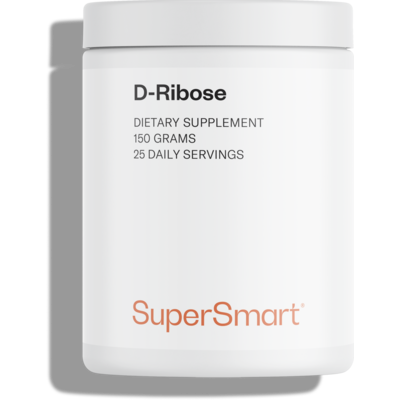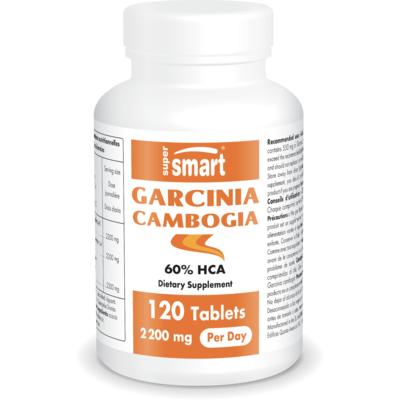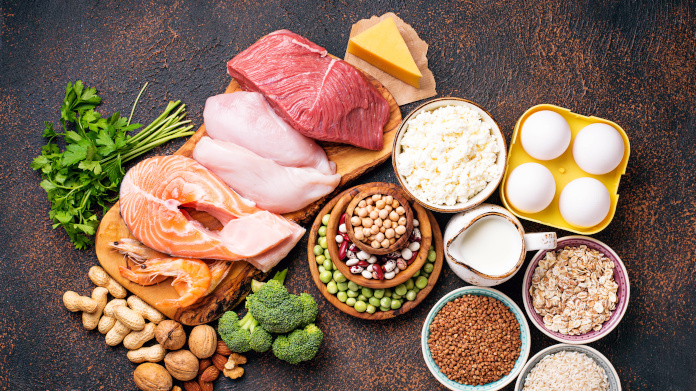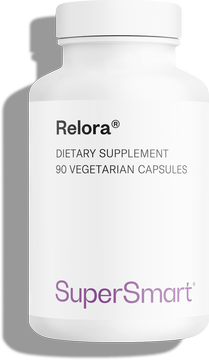Calories in food: definition, breakdown table & tips
The role of calories, nutritional density, balanced diet... Find out how to better understand calories in food to maintain a balanced diet that meets your body's daily needs.

Calories: a key role in the functioning of the body
What are calories?
Calories are the unit of measurement of the energy our body can get from the food we eat. It's a well-known concept in the world of slimming and nutrition.
In everyday language, we talk about ‘calories’, but in reality the unit referred to is the kilocalorie (or 1,000 calories).
Calories come mainly from macronutrients:
- carbohydrates (4 kcal/g);
- proteins (4 kcal/g);
- lipids (9 kcal/g).
One calorie is the amount of energy needed to raise the temperature of one gram of water by one degree Celsius (1).
What are calories used for?
In biological terms, calories enable cells to carry out their functions, so that the body functions properly.
They are essential for the functioning of the heart, lungs and brain, but also for maintaining body temperature and for physical activity.
What are the calorie requirements for different people?
Daily calorie requirements vary according to age, sex, level of physical activity and a person's specific needs (growth, pregnancy, illness, convalescence, etc.).
As a guide:
- A sedentary woman needs between 1800 and 2000 kcal/day.
- A sedentary man needs between 2000 and 2200 kcal/day.
- An active woman needs between 2000 and 2200 kcal/day.
- An active man needs between 2400 and 2800 kcal/day.
- A pregnant or breastfeeding woman needs around 500 kcal/day more than usual.
- Teenagers need between 2200 and 3000 kcal depending on their sex and level of activity.
- An elderly person needs between 1600 and 2000 kcal depending on their level of activity.
Table of calories in food (per 100 g)
| Category | Food/Drink | Average calories (per 100 g) |
|---|---|---|
| Fruit | Apple | 52 kcal |
| Banana | 89 kcal | |
| Cherries | 50 kcal | |
| Strawberries | 33 kcal | |
| Mango | 60 kcal | |
| Vegetables | Carrot (raw) | 41 kcal |
| Green beans, cooked | 28 kcal | |
| Broccoli | 34 kcal | |
| Cauliflower | 25 kcal | |
| Avocado | 160 kcal | |
| Radish | 16 kcal | |
| Cucumber | 15 kcal | |
| Meat / Fish | Chicken breast (grilled) | 160 kcal |
| Minced beef 15% fat (cooked) | 240 kcal | |
| Salmon (grilled) | 185 kcal | |
| White ham (pork) | 125 kcal | |
| Bacon | 155 kcal | |
| Starches | White rice (cooked) | 130 kcal |
| Potatoes (steamed) | 90 kcal | |
| Pasta (cooked) | 135 kcal | |
| White bread | 265 kcal | |
| Dairy products | Whole milk | 70 kcal |
| Semi-skimmed milk | 46 kcal | |
| Plain yoghurt | 60 kcal | |
| Emmental cheese | 370 kcal | |
| Drinks (100 g = approx. 100 ml) | Water/tea/coffee (unsweetened) | 0 kcal |
| Orange juice (processed) | 45 kcal | |
| Fizzy drinks (Coca-Cola, Orangina, etc.) | 42 kcal | |
| Strong alcohol | 250 kcal | |
| Beer | 43 kcal | |
| Processed foods | Pizza (processed) | 250-300 kcal |
| Chips (plain) | 530 kcal | |
| Chocolate bars (Mars, Lion, Twix, etc.) | 450-480 kcal | |
| Fats | Butter / margarine | 720 kcal |
| Olive oil | 885 kcal | |
| Condiments | Homemade mayonnaise | 720 kcal |
| Olive oil vinaigrette | 650 kcal | |
| Mustard | 66 kcal |
There's more to a balanced diet than counting calories!
Nutritional density: an essential concept
Calories give an indication of the energy provided by a food, but in no way reflect the nutritional quality of the product consumed.
Two foods with equivalent calorie content can have very different effects on health.
This is where the concept of nutritional density comes in:
- A food is said to be ‘nutritionally dense’ if it provides numerous micronutrients (vitamins, minerals, antioxidants, etc.) for a moderate amount of calories (2).
- A food has a low nutritional density when it is high in calories but low in essential nutrients, as is often the case with ultra-processed foods.
For example
200 kcal of crisps contain a lot of saturated fat, too much salt and few micronutrients of interest to the body. Conversely, 200 kcal of almonds are a source of good fats, fibre, vegetable protein and vitamins and minerals, including magnesium.
What is the satiety-inducing effect of food?
Satiety plays a key role in the natural regulation of appetite.
Fibre-rich foods (vegetables, legumes, fruit, wholegrain cereals) slow down digestion and prolong the feeling of fullness (3). And yet they are generally low in calories!
Proteins have a natural appetite-suppressant effect (4) and help maintain muscle mass.
On the other hand, quick sugars (sugary drinks, pastries, refined products) cause blood sugar peaks followed by cravings, encouraging snacking and weight gain. Not only are these foods often very high in calories, they also encourage you to eat more, without actually doing anything good for your body.
How do you adopt a balanced diet?
Respect the body's needs
To maintain a balanced diet, it's essential not to focus solely on calories.
It's important to respect hunger and satiety signals. On a daily basis, choose foods with a low glycaemic index (generally rich in complex carbohydrates) that are also high in fibre, protein and useful micronutrients.
This is what micronutrition is all about: a qualitative approach to diet, centred on micronutrients and the body's real needs.
Supplements to support your diet
Focusing on thermogenesis
Thermogensis is a physiological process where the human body produces heat by burning calories or energy stored as fat.
It can do this for a variety of reasons: to maintain body temperature, to digest food after a meal, and so on.
Certain factors can stimulate this energy expenditure slightly: cold, physical activity or certain natural compounds.
Studies have shown, for example, that capsaicin, an active ingredient in red chilli peppers, could help increase the calories burned each day during thermogenesis (5). This is why it is often found in formulas dedicated to weight maintenance or weight loss.
![]() Discover the Metadrine™ dietary supplement including the patented CapsiMax red pepper extract.
Discover the Metadrine™ dietary supplement including the patented CapsiMax red pepper extract.
Promoting a balanced intestinal microbiota
Lactobacillus gasseri is a well-documented probiotic strain that contributes to a balanced intestinal microbiota.
A healthy microbiota plays an important role in many physiological functions.
In addition, a number of scientific publications have looked into the possible link between the presence of the Lactobacillus gasseri strain and the regulation of body weight (6).
Since this strain has good resistance, it is often used in the formulation of probiotic food supplements.
![]() Discover Lactobacillus Gasseri food supplement capsules containing 12 billion microorganisms per dose.
Discover Lactobacillus Gasseri food supplement capsules containing 12 billion microorganisms per dose.
Maintaining muscle mass with proteins
People who engage in regular or even intensive physical activity often aim to maintain muscle mass while managing body fat.
To support this balance, it's important to combine adequate protein intake with natural aids that help regulate appetite and fat metabolism. Garcinia Cambogia , a tropical fruit extract rich in hydroxycitric acid (HCA), is commonly used to help reduce cravings, inhibit fat storage, and support weight management —without compromising muscle definition.
Among weight-management supplements, Garcinia Cambogia stands out for its natural action on appetite control and metabolic support , making it a useful ally for active individuals.
![]() Discover the Garcinia Cambogia food supplement, guaranteed flavour-free, sugar-free and colouring-free.
Discover the Garcinia Cambogia food supplement, guaranteed flavour-free, sugar-free and colouring-free.
SUPERSMART ADVICE
References
- Osilla EV, Safadi AO, Sharma S. Calories. 2022 Sep 12. In: StatPearls [Internet]. Treasure Island (FL): StatPearls Publishing; 2025 Jan–. PMID: 29763084.
- van den Heuvel EGHM, de Groot LCPGM, Tetens I, Feskens E, Raats MM, Steijns J. Editorial: Food-Based Dietary Guidelines: The Relevance of Nutrient Density and a Healthy Diet Score. Front Nutr. 2020 Dec 14;7:576144. doi: 10.3389/fnut.2020.576144. PMID: 33381514; PMCID: PMC7767824.
- Akhlaghi M. The role of dietary fibers in regulating appetite, an overview of mechanisms and weight consequences. Crit Rev Food Sci Nutr. 2024;64(10):3139-3150. doi: 10.1080/10408398.2022.2130160. Epub 2022 Oct 4. PMID: 36193993.
- Westerterp-Plantenga MS, Lemmens SG, Westerterp KR. Dietary protein - its role in satiety, energetics, weight loss and health. Br J Nutr. 2012 Aug;108 Suppl 2:S105-12. doi: 10.1017/S0007114512002589. PMID: 23107521.
- Janssens PL, Hursel R, Martens EA, Westerterp-Plantenga MS. Acute effects of capsaicin on energy expenditure and fat oxidation in negative energy balance. PLoS One. 2013 Jul 2;8(7):e67786. doi: 10.1371/journal.pone.0067786. PMID: 23844093; PMCID: PMC3699483.
- Miyoshi M, Ogawa A, Higurashi S, Kadooka Y. Anti-obesity effect of Lactobacillus gasseri SBT2055 accompanied by inhibition of pro-inflammatory gene expression in the visceral adipose tissue in diet-induced obese mice. Eur J Nutr. 2014;53(2):599-606. doi: 10.1007/s00394-013-0568-9. Epub 2013 Aug 6. PMID: 23917447.
- Duarte NM, Cruz AL, Silva DC, Cruz GM. Intake of whey isolate supplement and muscle mass gains in young healthy adults when combined with resistance training: a blinded randomized clinical trial (pilot study). J Sports Med Phys Fitness. 2020 Jan;60(1):75-84. doi: 10.23736/S0022-4707.19.09741-X. Epub 2019 Sep 23. PMID: 31565912.
Keywords
1 Days
On time shipping
On time shipping
GEORGE Verne
3 Days
Ordering was easy and the product was…
Ordering was easy and the product was delivered with no problems. Appreciated that I was notified when it would arrive. Thanks!
MascarC
8 Days
Great customer service - responsive …
I ordered from them and my item was unavailable for sometime. I was super happy when they reactivated my order and shipped my item which arrived very quickly. Great customer service.
Ruth Rueter
9 Days
Super fast shipping
Super fast shipping
Donald Borling
12 Days
Reputable companysearch and the number of…
The research and the number of selection of products.
NAKHJAVAN Shervin
25 Days
The Anti Aromatase is a great product
The Anti Aromatase is a great product. You just need to have constant inventory. Recently this product has been out of stock.
GEORGE Verne
27 Days
Great help on chat
Great help on chat. Knowledgeable and friendly.
Jason Argos
30 Days
Customer service was fast and friendly.
Customer service helped to stop the transaction process of the subscription. I appreciated that.
Greenie
31 Days
I order here due to the high quality of…
I order here due to the high quality of the products and the quick delivery of items - thank you
Barbara J
32 Days
SuperSmart's Eye Pressure supplements: highly recommended!
I purchase SuperSmart's Eye Pressure supplements regularly for over 5 years, and gotta say they are truly a wonderful product for my Glaucoma. Highly recommended if you have eye pain from your Glaucoma.
D. Martinez
37 Days
Quick service
Quick service
MONELL
37 Days
Speedy service.
Speedy service.
ROSENTHAL Marvin
41 Days
Clear website- Efficient
Clear website. Excellent search engine and fast delivery!
Mohamad Hussein
44 Days
They have great products.
They have great products.
Vickie
44 Days
Great Shipping Time!
You Have A Great Shipping Time! Praise The Lord!
DMHoge










